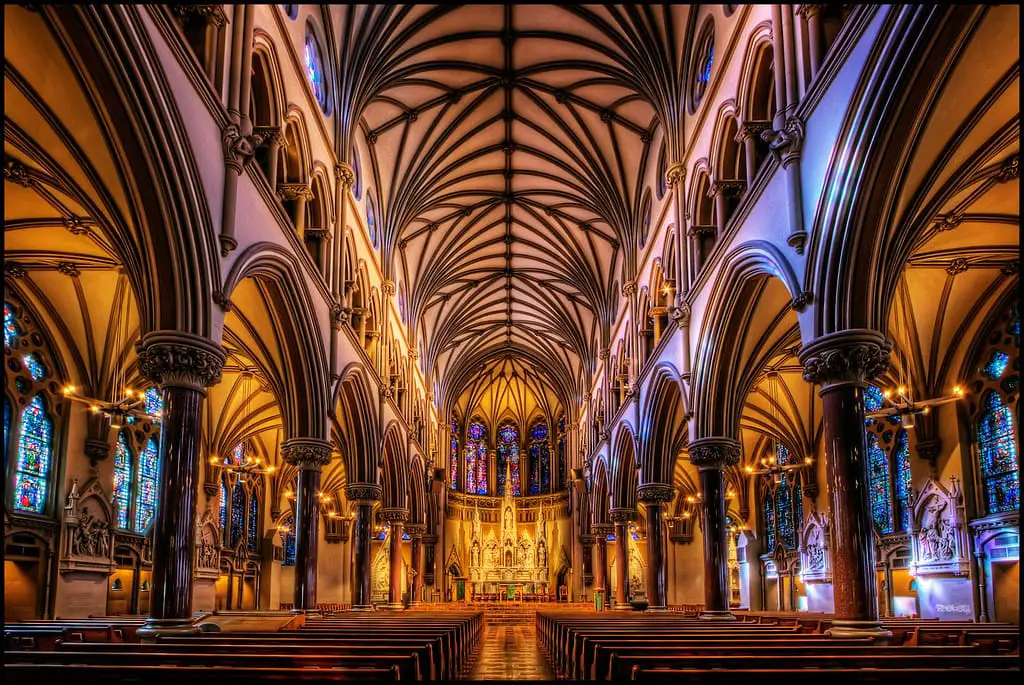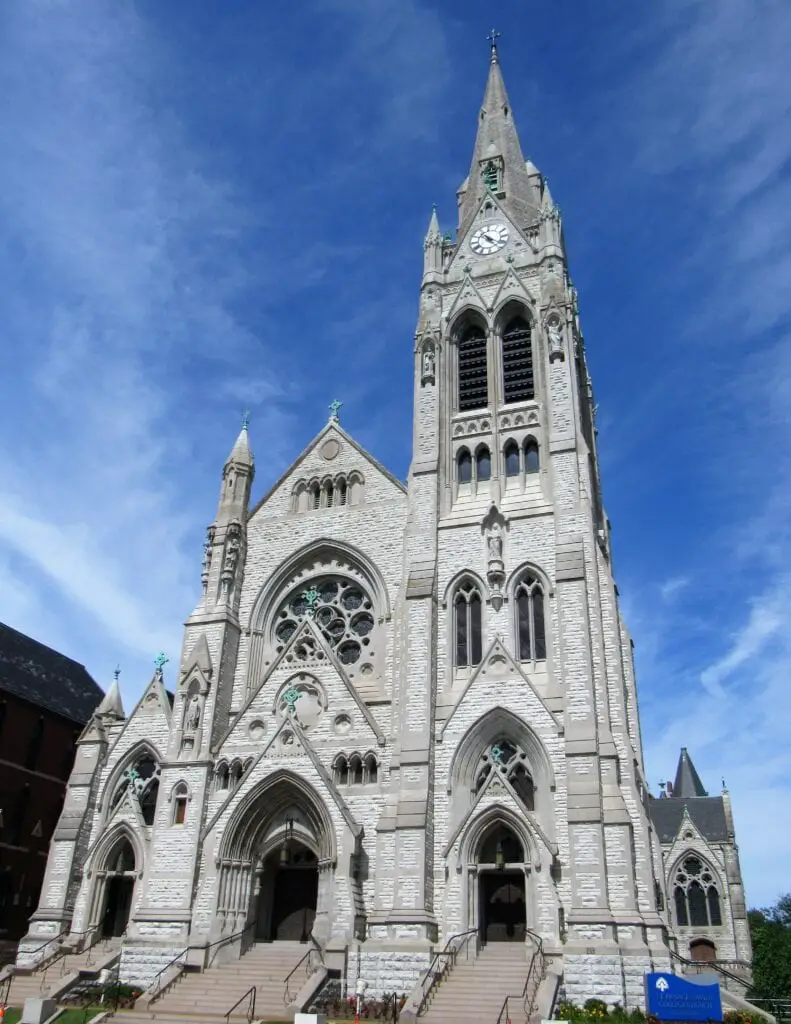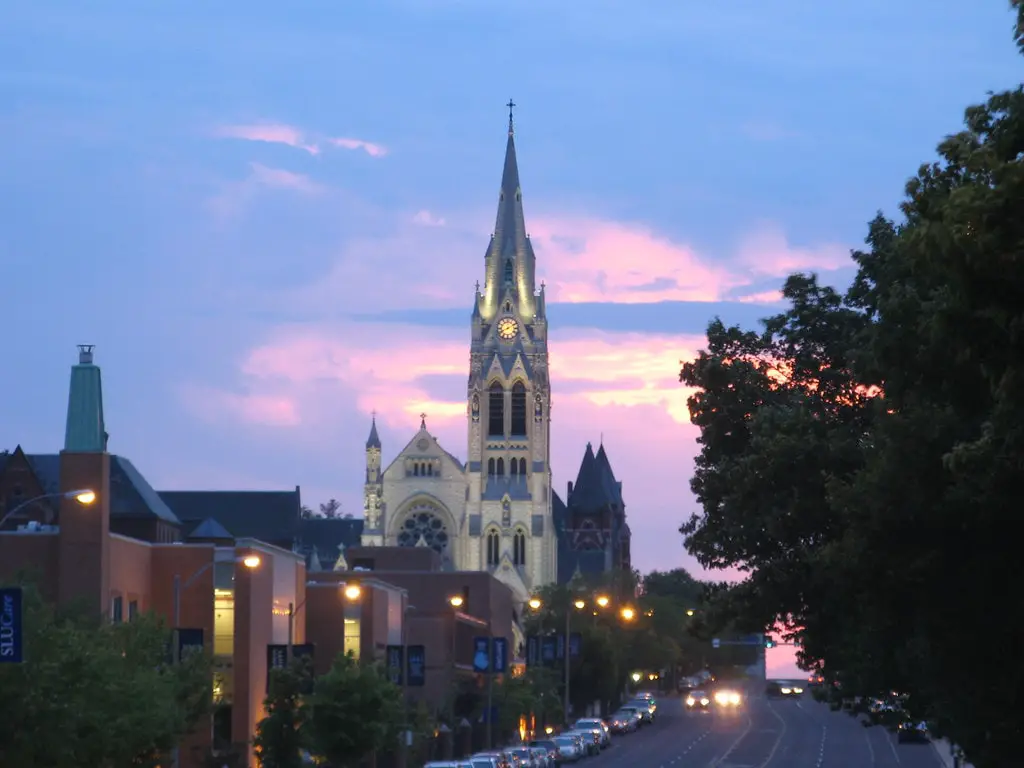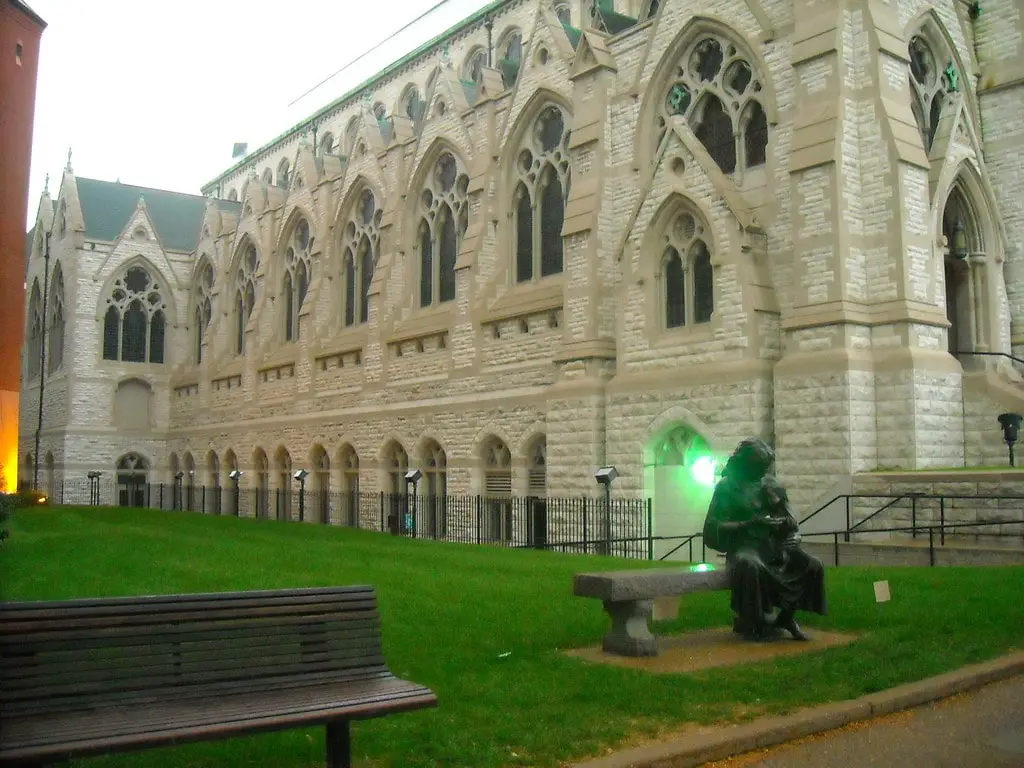History and Establishment of St. Francis Xavier College Church
Nestled in the Midtown neighborhood of St. Louis, Missouri, the St. Francis Xavier College Church is a testament to the city's rich historical and religious tapestry.
In 1836, the church was born from a simple yet profound mission St. Louis Bishop Joseph Rosati set forth.
He allowed the Jesuits to establish a parish at their college, marking the inception of St. Louis' first English-speaking parish.
The early congregation convened in the college's student chapel, a humble building devoted to St. Aloysius Gonzaga, nestled between Ninth and Tenth Streets on Washington Avenue.
As the parish grew, dreams of a dedicated facility began forming.
The cornerstone of the first church was ceremoniously placed on April 12, 1840, marking a milestone in the parish's journey.
Situated at the junction of Ninth Street and Christy (Lucas) Avenue, the church was dedicated to St. Francis Xavier and has since been fondly referred to as the College Church.
Architectural Details and Completion
As Saint Louis University relocated to its current location on Grand Boulevard in 1867, a new chapter unfolded for the College Church.
Archbishop Peter Richard Kenrick granted the church permission to move to the new campus in 1879.
The plans for the current church were meticulously drawn by Thomas Walsh, a respected St. Louis architect who had previously designed DuBourg Hall.
On June 8, 1884, excavation for the new church commenced with the laying of the cornerstone by Coadjutor Archbishop Patrick J. Ryan. Despite Walsh's untimely death, the construction didn't falter.
The Rev. Henry C. Bronsgeest, S.J., the parish pastor, enlisted the expertise of Chicago architect Henry Switzer to carry forward Walsh's vision.
By the end of 1884, the lower church was complete, serving the parish until the upper church's completion.
Taking inspiration from St. Colman's Cathedral in Cobh, Ireland, the construction of the upper church evolved into a project characterized by dedication and endurance.
The church was finally completed in 1898, with the crowning spire and bells adorning the tower in 1914.
Adding to the church's charm were the stained glass windows, a work of art by Emil Frei Jr., installed between 1929 and 1938, their ethereal glow illuminating the church's interior.

Renovation and Recognition
Over time, the St. Francis Xavier College Church became more than just a place of worship. It emerged as a historical monument, embodying the spirit and heritage of St. Louis.
The church's significance was officially acknowledged when it was designated a City Landmark in St. Louis in 1976.
By 1978, it had further solidified its historical importance by becoming a contributing property in the Midtown Historic District on the National Register of Historic Places.
In 1990, the church underwent a significant renovation, rejuvenating its antique charm while preserving its historical significance.
This landmark continues to stand tall, a beacon of faith and community, bridging the past, present, and future of St. Louis.

Square Dance for Solidarity
Embracing its vibrant community spirit, the church has recently hosted events that have brought together people from all walks of life.
One event that genuinely captured this spirit was the 2023 Square Dance for Solidarity, which took place in April.
The Square Dance for Solidarity is a testament to the church's ongoing commitment to fostering community and unity.
People of all ages and abilities came together for an evening of lively square dancing, donning boots, hats, and plaid to celebrate this shared experience.
Not only did this event promote a sense of camaraderie and joy among the attendees, but it also supported a noble cause.
The suggested donation of $5 from each participant was directed towards supporting L'Arche communities in the developing world.
Thus, This event embodied the church's mission to extend its compassion and solidarity beyond its community.

Personal Reflections
St. Francis Xavier College Church is more than a historical structure or an architectural marvel. It's a living, breathing entity witnessing countless stories of faith, perseverance, and community.
It stands as a beacon, guiding the spiritual journey of its congregation while also serving as a tangible link to the city's rich past.
Each brick and each stained-glass window tells a tale of the people who have found solace within its walls.
The echoes of hymns sung by generations still resonate within, and the tolling bells continue to mark the passage of time, uniting past, present, and future.
Its significance stretches beyond the realm of spirituality. The Jubilee Celebrations and the annual Square Dance for Solidarity testify to the church's commitment to fostering community and supporting humanitarian causes.

In conclusion, the St. Francis Xavier College Church, with its rich history and vibrant present, continues to symbolize faith, community, and heritage in St. Louis, Missouri.
Its steadfast presence over the years serves as a reminder of the city's resilience and unity, making it a landmark to be admired and a cherished part of the city's identity.
